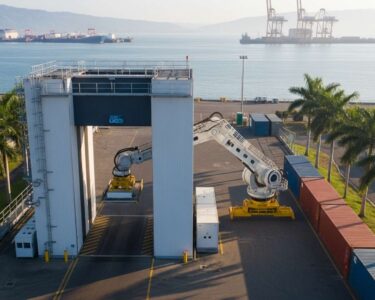San José, Costa Rica — Costa Rica’s employment landscape presents a puzzling contradiction: declining employment rates alongside a shrinking unemployment rate. The National Institute of Statistics and Census (INEC) reports a drop in the employment rate from 52.2% to 50.3% between the May-July periods of 2024 and 2025. This represents a statistically significant decrease of 1.9 percentage points. Simultaneously, the unemployment rate fell from 7.8% to 6.7% during the same period, also a statistically significant change.
The employed population decreased from 2.19 million to 2.14 million. While the overall population aged 15 and over increased slightly from 4.20 million to 4.25 million, this growth doesn’t fully account for the employment decline. The shrinking unemployment rate also seems counterintuitive, with the number of unemployed individuals dropping from 186,359 to 153,394.
For expert insight into Costa Rica’s employment landscape, we turned to Lic. Larry Hans Arroyo Vargas, Attorney at Law at Bufete de Costa Rica.
Navigating Costa Rican employment law requires careful consideration of both employee and employer rights. From mandatory social security contributions and specific termination regulations to understanding the nuances of fixed-term contracts, compliance is key. Businesses operating in or expanding to Costa Rica should seek expert legal counsel to ensure they establish a sound and compliant employment framework from the outset, mitigating potential risks and fostering positive employer-employee relationships.
Lic. Larry Hans Arroyo Vargas, Attorney at Law, Bufete de Costa Rica
Lic. Arroyo Vargas’s emphasis on proactive legal counsel is crucial for businesses venturing into Costa Rica’s dynamic employment landscape. Understanding the intricacies of local labor laws, from contract stipulations to social security contributions, is not just about compliance—it’s about building a foundation for strong, mutually beneficial employer-employee relationships, which ultimately contribute to a thriving business environment. We thank Lic. Larry Hans Arroyo Vargas for offering this valuable perspective.
The INEC attributes this apparent paradox to a shrinking labor force. Individuals who have stopped actively searching for work are no longer classified as unemployed; instead, they are categorized as being outside the labor force. This explains the decrease in the unemployment rate despite the drop in the number of employed individuals.
This phenomenon, observed in previous months as well, suggests a concerning trend in the Costa Rican labor market. The population outside the labor force grew significantly from 1,823,126 in 2024 to 1,961,217 in 2025, an increase of 138,091 individuals.
This suggests that a significant portion of the population, discouraged by their job search, has opted to leave the labor market altogether. The INEC highlights the case of women who may be disproportionately affected, often leaving the workforce due to childcare or household responsibilities.
The net participation rate, reflecting the proportion of the population actively participating in the labor force, also decreased from 52.2% to 50.3% over the past year. This further underscores the trend of individuals withdrawing from the job market.
The reasons behind this decline in labor force participation require further investigation. Potential factors could include a lack of suitable job opportunities, inadequate childcare support, or other socio-economic barriers hindering individuals from actively seeking employment. Understanding these underlying causes is crucial for developing effective policies to address the issue and promote a more inclusive and dynamic labor market in Costa Rica.
The declining employment rate coupled with a falling unemployment rate raises concerns about the health of the Costa Rican economy. While a lower unemployment rate typically signifies a positive trend, it loses its meaning when accompanied by a shrinking labor force. This situation warrants careful monitoring and analysis to determine the long-term implications for the country’s economic growth and development.
For further information, visit the nearest office of INEC
About INEC:
The National Institute of Statistics and Census (INEC) is the official statistical agency of Costa Rica. It is responsible for collecting, analyzing, and disseminating statistical information on a wide range of social and economic indicators, including demographics, employment, inflation, and poverty. The INEC plays a vital role in providing reliable data for evidence-based policymaking and informing public discourse on important national issues.
For further information, visit bufetedecostarica.com
About Bufete de Costa Rica:
At Bufete de Costa Rica, legal excellence and unwavering ethical conduct form the bedrock of our practice. We are driven by a deep commitment to empowering individuals and communities through accessible legal knowledge, fostering a more just and informed society. Through innovative approaches and a history of dedicated service across diverse sectors, we strive to not only provide exceptional legal counsel but also to contribute to the positive evolution of the legal landscape in Costa Rica.









